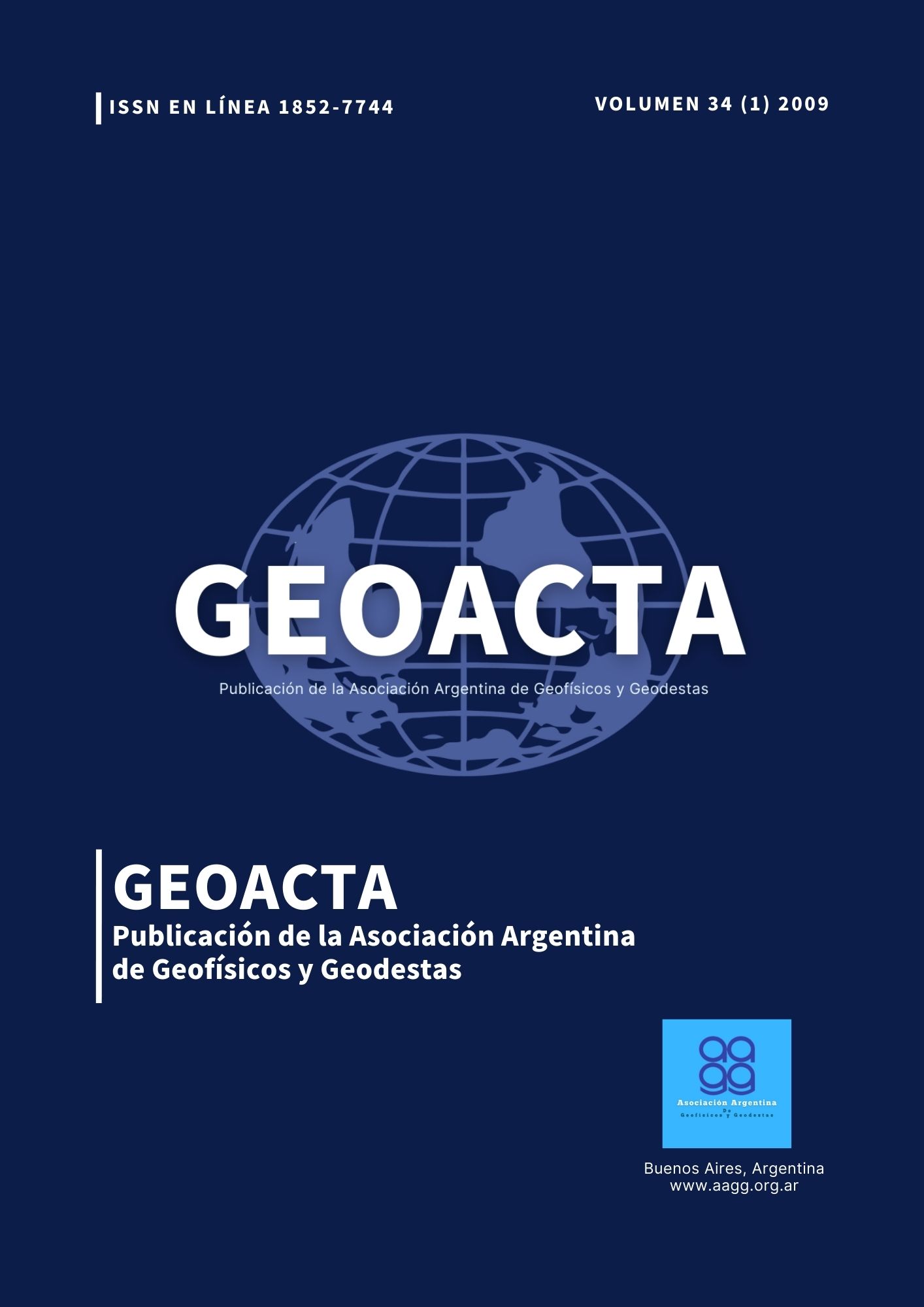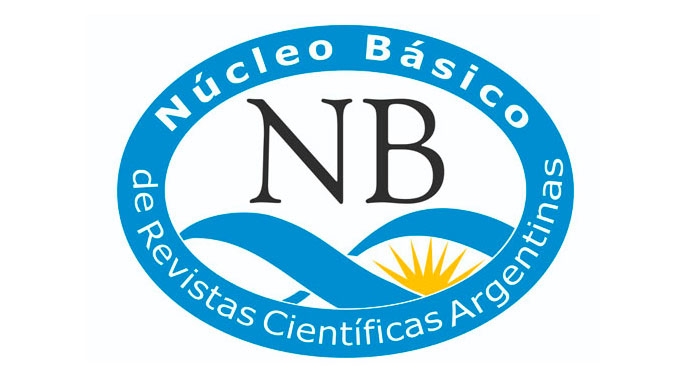Sorption of fluoride by quartz sand: batch tests
Keywords:
F- sorption, isotherms, batch testsAbstract
Despite the many efforts of scientists, in particular those from the field of soil science, the fate and distribution of fluorine (F) species in soils and aquifers remain relatively unraveled. As for groundwater systems, such a shortcoming makes difficult the finding and development of safe water supplies. Likewise, the use of transport models does not render acceptable results because of the many uncertainties related to the behavior of F in aqueous media. This paper presents the results of four batch test in which solutions of different pH and [F-] (concentration of fluoride) were in contact during 48 hours with clean quartz sand grains. The resulting data were fitted by linear versions of the Freundlich, the Langmuir, and the Langmuir-Freundlich models. The [F-] was varied between 0,5 and 10 mg L-1, except in one batch where a large initial concentration of F was used (45 mg L-1), and the range of pH used was 2,95 to 5,02. From a sieve analysis, the quartz grains had a medium size (d50) of 0,25 mm, and a uniformity coefficient (d40/d90) of 1,65. According to the fits and some dedicated goodness of fit indices, the Langmuir-Freundlich approach gave the best results for the batch test at the lowest pH, whereas the three remaining tests data were fitted by the Freundlich equation. It has to be mentioned that the pH of the equilibrium solutions were higher than the pH of the initial solutions, which was interpreted as an exchange process of OH- by F- on the quartz sand surface. However, such an exchange does not stand out as the exclusive mechanism promoting the F- disappearance from solution. It is deemed that the obtained results can be used as initial estimates of parameters in models used for calibrating the transport of F- in aquifers.
Downloads
References
Bolster, C. and G. Hornberger. 2007. “On the use of linearized Langmuir equations”. Soil Science Society of America Journal 71, pp. 1796-1806.
Broene, H. and T. De Vries. 1947. “The thermodynamics of aqueous hydrofluoric acid”. Journal of the American Chemical Society 69, pp. 1644-1646.
Burnham, K. and D. Anderson. 2002. Model selection and multimodel inference: A practical information-theoretic approach. Springer.
Fan, X., D. Parker, and M. Smith. 2003. “Adsorption kinetics of fluoride on low cost materials”. Water Research 13, pp. 4929-4937.
Freeze, R. and J. Cherry. 1979. Groundwater. Prentice-Hall, 604 p.
Gómez Artola, C., J. Borregón Martínez, M. Llamas Madurga y J. Sánchez Sáez. 1983. “Análisis preliminar del contenido de flúor de las aguas de Madrid y de su incidencia en las caries dentales de los niños”. Actas del III Simposio Nacional de Hidrogeología, pp. 157-166. 17
Harouiya, N, and E. Oelkers. 2004. “An experimental study of the effect of aqueous fluoride on quartz and alkali-feldspar dissolution rates”. Chemical Geology 205, pp. 155-167.
Hem, J. 1968. “Graphical methods for studies of aqueous aluminum hydroxide, fluoride, and sulfate complexes”. Geol. Survey Water-Supply Paper 1827-B, 33 p.
Langmuir, I. 1918. “The adsorption of gases on plane surfaces of glass, mica, and platinum”. Journal of the American Chemical Society 40, pp. 1361-1403.
Marion, G., D. Hendricks, G. Dutt, and W. Fuller. 1976. “Aluminum and silica solubility in soils”. Soil Science 121, N° 2, pp. 76-84.
Morey, G., R. Fournier, and J. Rowe. 1962. “The solubility of quartz in the temperature interval from 25 °C to 300 °C”. Geochimica et Cosmochimica Acta 26, pp. 1029-1043.
Morrill, L., B. Mahilum, and S. Mohiuddin. 1982. Organic compounds in soils: Sorption, degradation, and persistence. Ann Arbor Science, 326 p.
Murthy, D.S. and D.V. Murthy. 1977. “A study of high fluoride bearing waters around Nalgonda District, Andhra Pradesh”. Proceedings of the 1974 Symposium on Fluorosis, Indian Academy of Geosciences, pp. 311-315.
Nash, J. and J Sutcliffe. 1970. “River flow forecasting through conceptual models, Part 1: A discussion of principles”. Journal of Hydrology 10, pp. 282-290.
Natarajan, V. and V.R. Mohan Rao. 1977. “Hydrochemical investigation for fluorine-bearing minerals in the Kangall and Hallia River Basins, Nalgonda District, Andhra Pradesh”. Proceedings of the 1974 Symposium on Fluorosis, Indian Academy of Geosciences, pp. 37-47.
Orion Research, Inc. 1973. Instruction manual. Fluoride electrodes models 96-09 and 94-09. Orion Res., Inc., 28 p.
Perrott, K. B. Smith, and R. Inkson. 1976. “The reaction of fluoride with soils and soil minerals”. Journal of Soil Science 27, pp. 58-67.
Ramamohana Rao, N.V., K. Rajyalakshami, K.R. Krishna Sastry, P. Subba Rao, V.V. Krishna Rao, and K. Narasimha Rao. 1977. “Incidence of fluorosis in drinking water resources in Andhra Pradesh”.
Proceedings of the 1974 Symposium on Fluorosis, Indian Academy of Geosciences, pp. 227-235.
Rao, A.S. 1977. “Hydrogeological studies in parts of Nandigama Taluk, Krishna District, Andhra Pradesh, with special reference to the problem of fluorosis”. Proceedings of the 1974 Symposium on Fluorosis, Indian Academy of Geosciences, pp. 206-216.
Rao, N. 2003. “Fluoride and environment- A Review”. Proceedings of the Third International Conference on Environment and Health, University of Madras, pp. 386–399.
Roberson, C. and R. Barnes. 1978. “Stability of fluoride complex with silica and its distribution in natural water systems”. Chemical Geology 21, pp. 239-256.
Sposito, G. 1980. “Derivation of the Freundlich equation for ion exchange reactions in soils”. Soil Science Society of America Journal 44, pp. 652-654.
Sposito, G. 1984. The Surface Chemistry of Soils. Oxford University Press, New York, New York.
Stumm, W. and J. J. Morgan. 1981. Aquatic Chemistry. An Introduction Emphasizing Chemical Equilibria in Natural Waters. John Wiley and Sons, New York, New York.
U.S. Environmental Protection Agency. 1979. Methods for chemical analysis of water and wastes, 1978. Env. Mon. and Support Lab., Office Res. and Develop., 441 p.
U.S. Environmental Protection Agency. 1999. Understanding variation in partition coefficient, Kd, values. Volume I: The Kd Model, Methods of Measurement, and Application of Chemical Reaction Codes. United States Office of Air and Radiation EPA 402-R-99-004A, 212 p.
Downloads
Published
How to Cite
Issue
Section
License
Copyright (c) 2009 Eduardo Usunoff, Pablo Winzettel, Sebastián Dietrich

This work is licensed under a Creative Commons Attribution-NonCommercial-ShareAlike 4.0 International License.
Starting in 2022 (Vol. 43 number 2) articles will be published in the journal under a Creative Commons Attribution-NonCommercial-ShareAlike 4.0 International license (CC BY-NC-SA 4.0)
According to these terms, the material can be shared (copied and redistributed in any medium or format) and adapted (remixed, transformed and created from the material another work), provided that a) the authorship and the original source of its publication (journal and URL of the work), b) is not used for commercial purposes and c) the same license terms are maintained.
Prior to this date the articles were published in the journal under a Creative Commons Attribution license (CC BY)
In both cases, the acceptance of the originals by the journal implies the non-exclusive assignment of the economic rights of the authors in favor of the editor, who allows reuse, after editing (postprint), under the license that corresponds according to the edition.
Such assignment means, on the one hand, that after its publication (postprint) in the GEOACTA Magazine of the Association of Geophysicists and Geodesists, the authors can publish their work in any language, medium and format (in such cases, it is requested that it be recorded that the material was originally published in this journal); on the other, the authorization of the authors for the work to be harvested by SEDICI, the institutional repository of the National University of La Plata, and to be disseminated in the databases that the editorial team considers appropriate to increase visibility. of the publication and its authors.
Likewise, the journal encourages the authors so that after their publication in the Journal of the Association of Geophysicists and Geodesists, they deposit their productions in other institutional and thematic repositories, under the principle that offering society scientific production and Unrestricted academic scholarship contributes to a greater exchange of global knowledge.
















